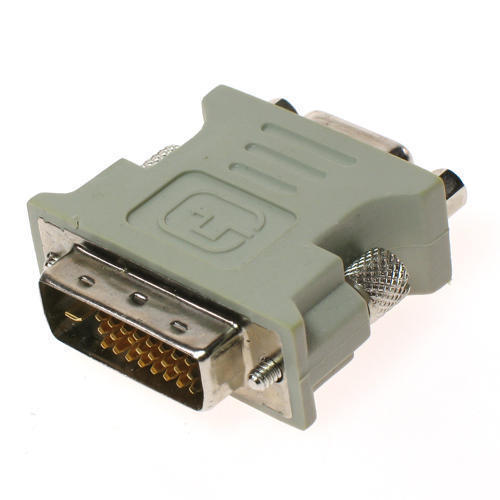VGA (Video Graphics Array) is a hardware specification for display monitors and computers that allows a computer to display applications on a VGA-based monitor via a VGA cable. VGA technology is one of the oldest forms of display hardware in computing and is outfitted in virtually every computer system in the world. VGA uses analog signals but is compatible with most digital devices. While DVI technology has superseded VGA technology, both specifications are often included in personal computers, with VGA technology being much more common in laptop computers than desktop computers.
What is DVI-D?
DVI (Digital Visual Interface) is a hardware specification for computers and display equipment that is similar to VGA. DVI-D (Digital Visual Interface Digital) refers to DVI technology that is used exclusively with digital devices, while other versions of DVI can be used with analog devices. While VGA technology was made for analog computers, DVI technology is more modern and is intended for digital computers and display equipment, such as monitors and projectors. While VGA and DVI produce similar quality on regular monitors, DVI produces much higher picture quality on LCD monitors and other high-definition equipment.
How to Convert DVI-D to VGA
In order to convert DVI-D to VGA, either a DVI-D to VGA conversion cable or a DVI-D to VGA adapter must be implemented. DVI-D to VGA conversion cables and adapters are similar but the conversion cable allows the user to separate the devices over a short distance while the adapter requires the devices to be back-to-back. Most display devices have their own cable, allowing the user to connect the adapter to a DVI port and use the VGA cable to bridge the distance between the two devices. Either method allows the user to convert DVI-D digital signals into VGA analog signals so that a DVI-D source device can be used with a VGA output device.
Applications
A user may wish to convert DVI-D signals into VGA signals if he/she is using a DVI-D computer and a VGA monitor or projector. DVI-D technology is found in most modern digital equipment and should be used with a DVI-D output device, such as an LCD monitor. However, if the user’s output device is older than the source device, it may depend on analog signals and not have a DVI-D port.




Nyak
Quote “In order to convert DVI-D to VGA, either a DVI-D to VGA conversion cable or a DVI-D to VGA adapter must be implemented.”.
I don’t think you could simply connect those ports easily, you need a DVI-D to VGA converter. An adapter and a converter is not the same, it is different.
Ben Brand-Cotti
DVI-D cannot be converted to VGA with a passive adapter or cable, as you have suggested. A DVI-D connector, as shown in your images above, has no analogue pins. Active conversion is required in order to convert analogue signals to digital and visa versa. DVI-I on the other hand, carries single link digital signals on the main bank of pins, and analogue signals on 4 pins at one side of the connector, these 4 pins connect the correct signals through to the VGA connector in your Image. Your image is inaccurate as the DVI side of your connector has no analogue pins, so is not DVI-I, it is also dual link (for resolutions in excess of 1920×1200) so it is rare that you would find analogue displays capable of using any such signal.
For most scenarios, users of legacy analogue systems are gradually (as budget and support for their old systems allows/dictates) transitioning to digital systems. so most commonly users will implement A2D active conversion in order to maintain support for their older systems in the newer digital world.